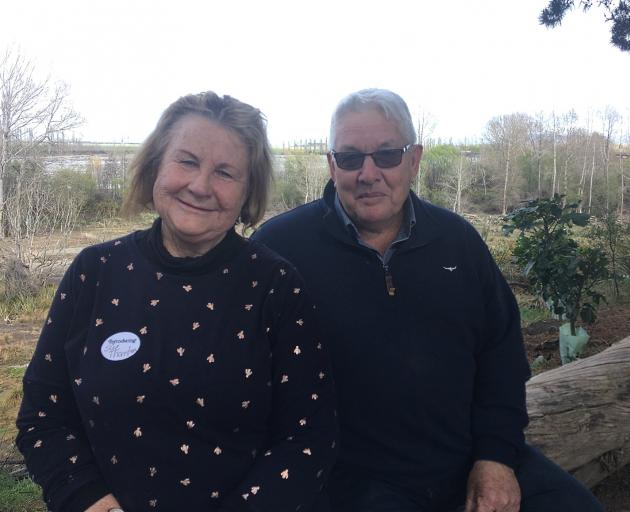
The wetland, with its ongoing development, is on unused, flood-affected terrace land bordering the Rangitata River. A digger was used to cut a track just to get to the site, which sits about 20m down on a lower terrace.
It was an underdeveloped swamp land area but appealed to Mr Thornton, who always had an interest in native fauna.
The land was drained, had its topsoil removed then lined with shingle to form a berm, and reinstated to contain the spring-fed water.
It’s a labour of love fed by their desire to "improve their environmental footprint".
Unseen from the road, the wetland, on the east side of the State Highway, is a natural haven inhabited by fantails, grey warblers and harrier hawks, but there is a lot of other inhabitants and mahinga kai, who now have a chance to thrive.
The Thorntons have owned the current Ealing Dairies farm for the past 20 years.
It’s a 233ha property along Ealing Road, on the north side of the Rangitata River.
The wetland area covers 3.4ha.
They have a 50/50 sharemilker, and milk 800 cows on a 40-a-side Herringbone shed.
They are connected to the MHV water scheme and use four centre pivots to irrigate.

Mr Thornton has worked in the dairy industry all his life, but the couple began their journey to farm ownership as lower order sharemilkers in Kaikoura in 1982, and advanced through the system, taking up an opportunity to go 50/50 sharemilking at Orari, before they were able to lease and then purchase the whole Ealing Dairies property in 1999. They also have another 242ha property near Hinds.
The couple have invested time and effort into the Ealing site. They have not only cleared the area and made about 2500 plantings, with an 80% success rate, but have also future-proofed its biodiversity by placing the area under a QEII covenant, with the help of QEII National Trust representative, Alice Shanks.
Initially the whole area was just a jungle, Mr Thornton said.
It was overgrown with willow and they had to use a machete to get into it, but it had a lot of natural vegetation and remnants underneath the growth.
It meant taking care when using the digger to clear the land, in order to protect those small plants, Mr Thornton said.
Significant time was taken with weed control and getting the track infrastructure in place to even get the digger into the area, Mr Thornton said.
Protecting wetlands areas can help protect land from flooding, filter nutrients and sediment from watercourses, and it also provides habitat for many native plants, animals and fish.
"The bird life is quite fantastic. It’s quite satisfying, knowing it’s intergenerational [the protection on the land]."
The most common weeds and pests have been willow, gorse broom and old man’s beard, and there is an ongoing battle with hares.
About 50 hares were shot over a three-hour period one weekend, and it barely made a dent in the numbers. There have also been deer and wild pigs wandering down from up river, as well as possums, stoats and wild cats.
"When the river comes up, deer come up too.
"The weed burden has gone down with time," he said, which was one relief.
Once developed, it will be a good resource for schools, and provide a research site for hydrology because its spring fed, he said.
They have already had pupils from Hinds School planting carex at the site.
There will also be wildlife, plant life, fungi and insects.
"Once we’re seeing bellbirds and tui here we’ll know we have done well," he said.













